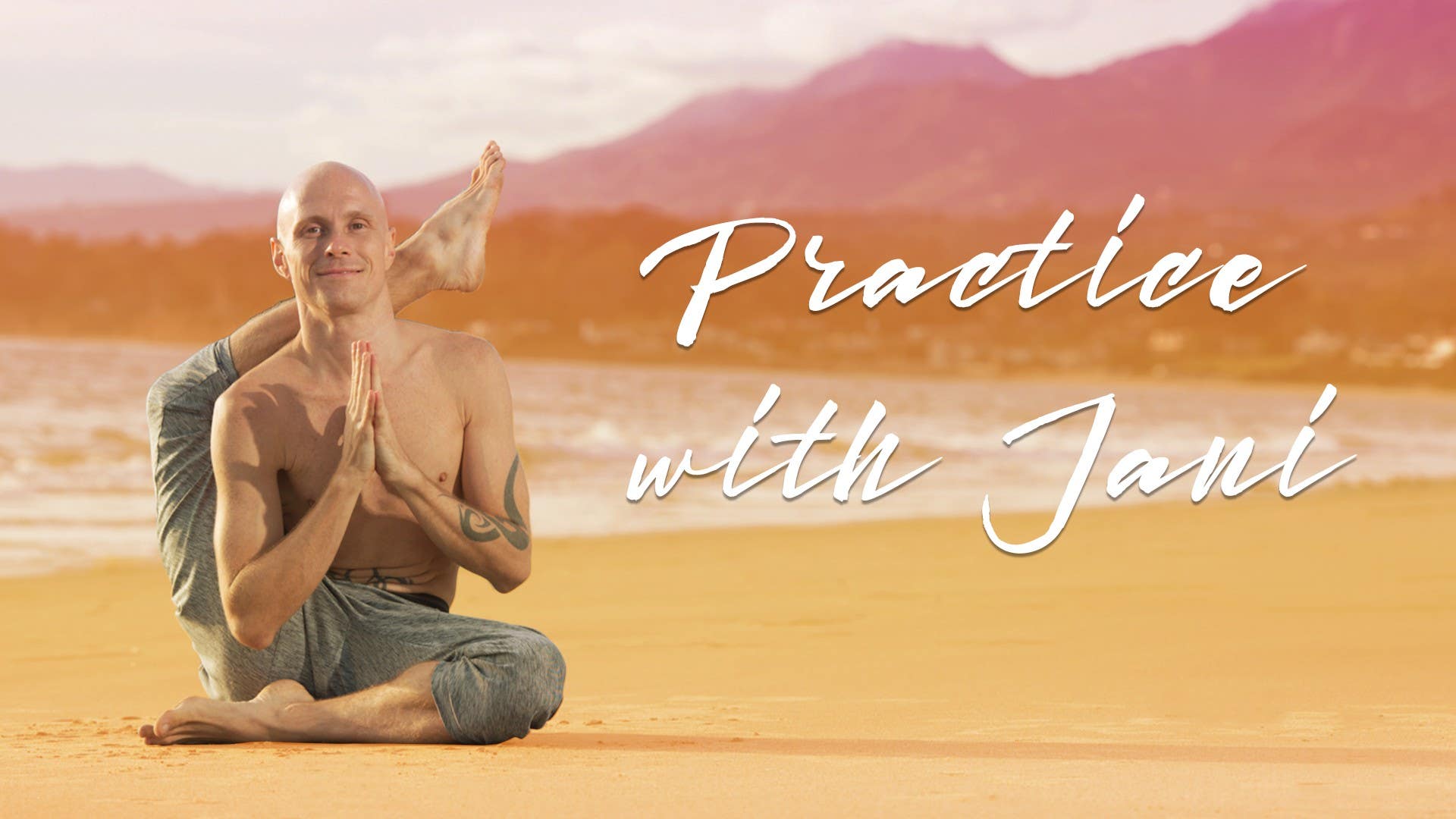Description
About This Video
Transcript
Read Full Transcript
(gentle waves lapping) First pranayama is called purna tha jathara pranayama And purna means full. Tha is like expansive, and then the jathara means belly, and then bhedana means breathing. So this is the breathing, full, passive, abdominal breathing. So once in, it's easy. Because you don't try to control the breathing.
You just breathe naturally, so that you relax the abdomen and expand some. When you expand the breathing, you do it to do the relaxation. Not really like actively try to expand the breathing. So that basically when you inhale, if you can relax the abdominal muscles, then when you inhale belly is moving out and when you exhale it starting to move in. This is what happens naturally if you can relax the abdominal muscles.
So you just try to keep the mind focused on the breathing but not really trying to control the breathing. So that's the purna tha jathara pranayama. When the abdomen is moving, when you do the inhalation, belly is moving out and exhale it's moving in. And in order to expand the exhalations, try to relax the lower abdomen. When you do the exhalation, try to relax lower abdomen and then naturally start to expand.
And when you do inhalation, try to relax the sides and armpits. So that there is space in the thoracic to breathe and when we're doing this purna tha jathara bhedana then the dome of the diaphragm is moving. Dome of the diaphragm is that space between the lungs and the diaphragm. It's not really diaphragm. It's the space between.
So when you do inhalation, the dome of the diaphragm is moving back and down. And when you do exhale it's moving forward and up, so that's the movement, that's natural movement, what happens when you relax the breathing. Diaphragm itself is when you do the inhalation is contracting moving down and when you do the exhalation it's expanding and moving up. An active part in this breathing is the option that mind is fixed on the breathing. As long it is, bedhana is the breathing technique, as long as mind is focused on the breathing.
Basically there is no control in the breathing itself, but the control focus is on the, breathing is focused on the mind. And mind is focused on the breathing. So mind is observing the breathing, and also try to breathe in the mind. Bring the breathing also in the mind so it's kind of two way road. To fix the mind to the breathing.
And the pose for this kind of breathing technique is a pose that is, asana that is relatively passive. Example, savasana and then also balasana when you do it after the head stand it's kind of counter pose for the headstand in one sense. So now we're gonna do savasana. So you can lie in your back, open the legs, about 30 degrees angle and then move your arms maybe hands maybe 50 centimeters away from your hips, relax toes, relax sole of the foot. And then focus on the breathing without trying to control it.
Especially relax the abdominal muscles, relax the sides, and armpits. And focus observing the breathing. Inhalation if you observe the, when the abdominal muscles are relaxed, inhalation belly is moving up. And exhale, it's moving down towards the mat. When you do inhalation try to expand the inhalation by relaxing sides.
Relaxing part of the body where the lower ribs are situated. When you do exhalation, relax the lower abdomen. Then the exhalation start to expand. And then observe the dome of the diaphragm. Now when you lie down, when you do inhalation dome of the diagram, if my hand is the dome, the space between the diaphragm and lungs, inhale is moving towards the floor and then towards the feet.
And exhale is moving towards the head and then towards the ceiling. Diaphragm itself when you do inhalation is contracting, it's moving down. You can almost feel it if you practice. You can become sensitive enough to feel the movement of the dome of the diaphragm, sorry diaphragm. And then when you do the inhalations, diaphragm is expanding and moving up.
So basically you can continue with this breathing throughout the whole savasana. And after you're done, bring the knees on the chest, you can rock your back, couple of times from side to side and then turn your right side, and you can come up. So this is purna tha jathara bhedana. Full active abdominal breathing. Thank you.






You need to be a subscriber to post a comment.
Please Log In or Create an Account to start your free trial.